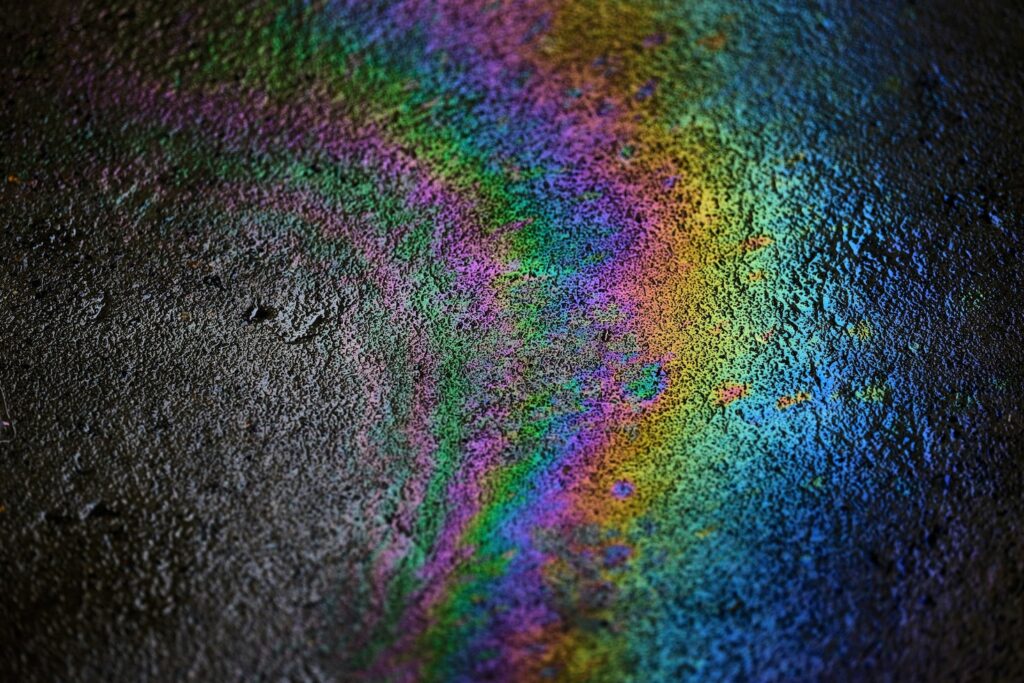How To Clean Up Oil Spill in Rain

Learn about the materials, equipment, and methods to clean up oil spills. Find out how to handle an oil spill in the rain, and understand why it’s important.
Oil spill cleanup is a serious environmental issue that requires quick and effective action. But what happens when it rains during an oil spill? It’s important to know how to properly clean up oil spills in the rain to protect your local environment from further damage. The benefits of proper cleanup include:
- Protecting water sources from contamination.
- Minimising the spread of pollutants.
- Reducing the risk of harm to wildlife.
Oil pollution in the Rain
Oil pollution in the rain is a serious environmental issue that can devastate ecosystems and human health. Rainwater runoff carries oil, grease, and other pollutants from roads, parking lots, and industrial sites into rivers, lakes, wetlands, and coastal waters. When it rains heavily or for extended periods, these pollutants are washed away faster than they can be absorbed by soil or vegetation. This causes them to accumulate in large quantities, which can cause significant damage to wildlife habitats as well as contaminate drinking water sources.
The most common type of oil pollution caused by rain is petroleum-based hydrocarbons such as gasoline or diesel fuel which often comes from leaking underground storage tanks at gas stations or automotive repair shops. These types of oils are very difficult to clean up because they mix with water quickly and spread over wide areas. Additionally, when mixed with rainwater, these oils become emulsified, creating an oily film on the surface of bodies of water that is hard to remove without specialised equipment.
Clean Up an Oil Spill in the Rain
When it comes to cleaning up an oil spill in the rain, there are a few oil spill cleanup methods that can be used depending on the size and type of the oil spill. In general, smaller spills can be cleaned up by hand with absorbent materials such as sawdust or kitty litter while larger spills may require mechanical containment and removal devices.
When faced with cleaning up an oil spill during rainy weather, there are several steps you should take immediately to minimise the impact on your environment:
Control the Spill
To prevent the spilled oil from spreading, containment booms and skimmers are deployed around the affected area to create a physical barrier and capture the oil. This will help reduce the spread of the oil into surrounding waterways and wetlands.
Contain the Spill
Once the oil has been contained, various methods are used to remove it from the water’s surface, including skimming, burning, chemically dispersing, or vacuuming the oil.
Clean Up the Spill
Collect the spilled oil and dispose of it, then clean up any residual oil.
Remediate the Spill
The final step in cleaning up an oil spill involves restoring the affected environment to its pre-spill condition. This may involve restoring habitats, removing contaminated soil, and monitoring the area for any long-term impacts.
Spill Cleanup Tools to Use
When it comes to oil spills, the most important thing is to act quickly and efficiently. To do this, you need the right tools for the job. Spill kits are the go-to solution, as they contain everything you need for a fast-response cleanup. Kits typically include gloves, goggles, sorbent pads or booms/pillows, collection bags, and waste disposal bags. Other oil spill cleanup materials include:
Booms
Booms are floating barriers designed to contain and absorb spilled liquids on water surfaces. They come in various sizes and materials depending on their purpose, such as oil booms which are used specifically for containing petroleum products like diesel fuel or motor oils.
Skimmers
Skimmers are devices used for removing liquid from a surface using suction power or absorption pads. This makes them ideal for cleaning up large spills where booms may not be able to reach every corner of an affected area due to wind or current conditions.
Absorbents
Absorbents are materials that soak up liquids like oil and other hydrocarbons from hard surfaces such as concrete floors or asphalt roadsides after a spill has occurred. These materials come in many forms, including granular absorbents (like kitty litter), pillows, socks, and mats. Place absorbent materials first before attempting any cleanup efforts with skimmers or booms since this will help reduce the amount of liquid that needs to be removed during oil spill cleanup operations.
Get the Right Cleanup Tools for Your Business
Ecospill provides quality spill kits and environmental safety equipment designed specifically for oil spill cleanup operations. With our help, you can ensure your workplace meets its environmental obligations with ease. Contact us today to find out more about our top-quality oil spill cleanup equipment.
